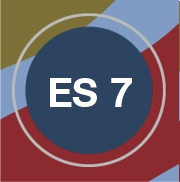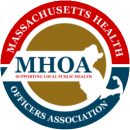
ES 7. Enable equitable access
Core Function: Assurance
Why This Is Important
Local health department staff are often instrumental in identifying populations that may struggle to access substance misuse prevention and treatment services. Local governmental agencies (including the public health department) can coordinate provider services and provide information, referrals, transportation, and other services that help to ensure that people can access the care they need, when and where they need it.
What’s Involved
- Ensure access to quality healthcare and social services, including behavioral and mental health services that are culturally and linguistically appropriate.
- Engage health delivery systems to assess and address barriers to accessing needed health services, including behavioral and mental health services.
- Ensure access to behavioral health supports for individuals who may not be ready, or who choose not to engage in substance misuse treatment services.
Key Considerations
- Health and racial equity are not synonymous. Racial equity means being aware of and considering past and current inequities, and providing all people—especially those most impacted by racism—with the supports needed to thrive. Racial equity is slightly different from health equity in its commitment to recognizing and addressing the structural roots and historical impact of racism. Racial equity also requires us to look back and repair past actions—such as changing harmful policies that disproportionately affected certain populations or prevention messaging that deepened cultural divides. It is important to consider both health equity and racial equity when thinking about access.
- Think broadly about the factors that affect access. Substance misuse doesn’t happen in a vacuum. Ensuring access thus means looking at the constellation of factors that may prevent someone from accessing care. For example, some groups may have legal access to services, but may self-select out for fear of stigma or retribution, or because services offered aren’t culturally relevant. Others may be unable leave work to attend an appointment. Still others may be unable to adhere to a medication regimen because they have no place to live. To understand these barriers, connect with partners who are dedicated to addressing issues of income, food insecurity, housing, and employment; who support access to education and quality healthcare; and who can help to ensure that the voices of all populations are represented in your work.
Get Started!
- Integrate cultural responsiveness and humility into all aspects of prevention planning and decision making. For example:
- Stress the importance of relevant, culturally appropriate prevention approaches.
- Employ leaders, practitioners, and evaluators who practice and integrate practices that demonstrate cultural responsiveness and humility.
- Promote and support the development of cultural competence, humility, and responsiveness among program staff.
- Provide opportunities for training and continuing professional development on cultural competence, humility, and responsiveness.
- Learn about the prevention, intervention, and treatment resources available statewide and in your community, and disseminate this information in accessible ways. Examples include:
- Substance Use Helpline (DPH). Only statewide, public resource for finding substance use treatment, recovery, and problem gambling services, including services for youth and young adults. Helpline services are free and confidential. Trained specialists are available to help callers navigate the treatment system.
- Find Treatment.gov (SAMHSA). Provides information on thousands of state-licensed providers who specialize in treating SUD, addiction, and mental illness.
- Opioid Treatment Program Directory (SAMHSA). Provides a directory of opioid treatment providers in each state.
- National Helpline (SAMHSA). Provides 24-hour free and confidential treatment referral and information about mental and/or SUD, prevention, and recovery in English and Spanish. 1-800-662-HELP (4357) or 1-800-487-4889 (TTY).
- Learn about the prevention, intervention, and treatment resources available statewide and in your community, and disseminate this information in accessible ways. Examples include:
- Massachusetts Organization for Addiction & Recovery. Promotes public awareness of substance misuse, the benefits of recovery, and the social costs of addiction in communities and the workplace.
- Massachusetts Health Connector. Offers subsidized and unsubsidized health insurance to individuals and small-business employers. Can be used to cover addiction treatment services.
- Massachusetts Alliance for Sober Housing. Dedicated to creating safe and stable places where people with SUD can live, conduct meaningful activities, and build relationships and social networks for support.
- Learn to Cope. Nonprofit support network that offers education, resources, peer support, and hope for parents and family members coping with a family member using opiates or other drugs.
- Recovery High School Programs (MA Department of Elementary and Secondary Education). Secondary schools designed specifically for students in recovery from SUD or co-occurring disorders. Site provides information on the Commonwealth’s five recovery high school programs: Beverly, Boston, Brockton, Springfield, and Worcester.
Equity in Action: Norwood’s Community Crisis Intervention Team
Norwood’s Community Crisis Intervention Team (CCIT) is dedicated to promoting communication and enhancing the response of public and private agencies to individuals with a mental health disorder, SUD, and/or developmental disability, or who are experiencing trauma. The team comprises representatives from across the community, including the town’s police, fire, and public health departments; housing authority; mental health and elder services agencies; Norwood Public Schools; and local hospitals.
The CCIT meets monthly to discuss individual cases and collaborate on a response plan, paying particular attention to those in the community who may need extra assistance due to health and racial inequities. In addition to providing access to treatment and recovery services, it also addresses critical social determinants of health, including access to transportation, food, and housing.
For example, a member of the Norwood Police Department recently alerted the team to an individual with SUD who had had multiple encounters with law enforcement. The CCIT mobilized the resources to find the individual (who was uninsured) a bed in a local treatment facility. When he was later released, they also helped to find him housing and employment.
“CCIT reflects the strong capacity and investment Norwood has in providing equitable services to members of the community who may need extra assistance,” says Aubrey Ciol, the program director for Norwood’s Drug-free Communities program, embedded in the city’s health department. “The team is engrained in the community. We all work together to provide the supports people need to live healthy and productive lives.”
